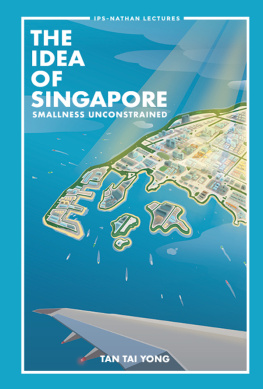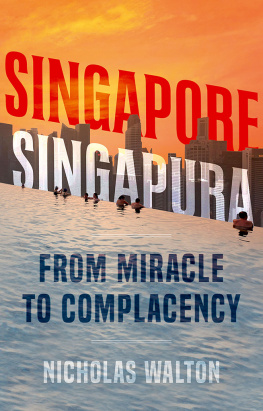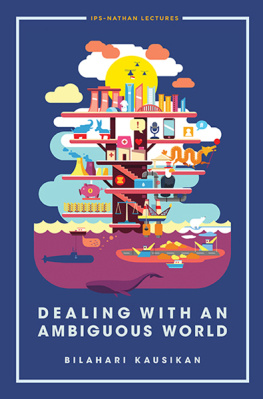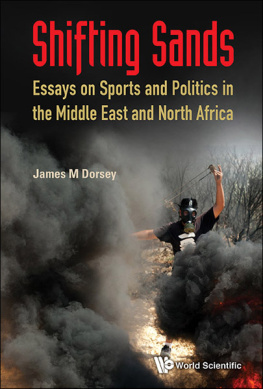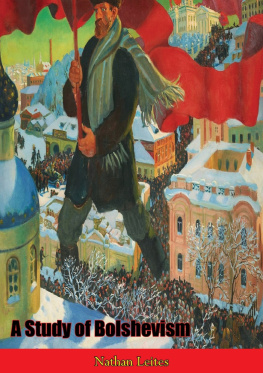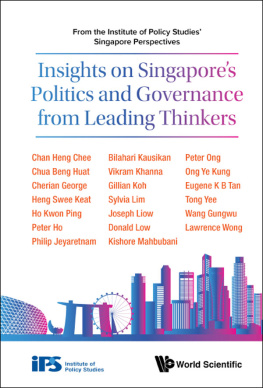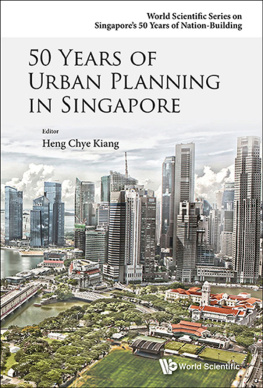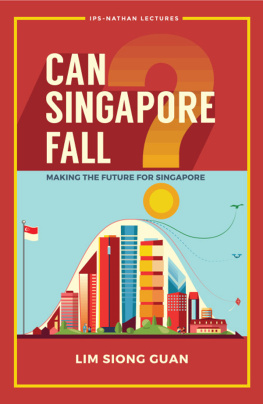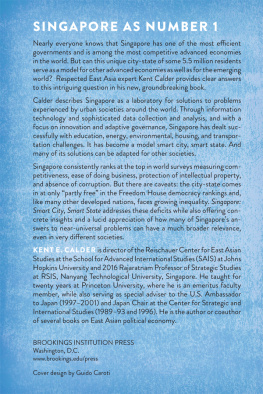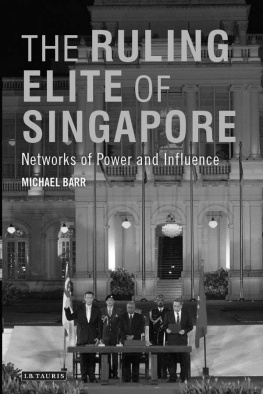


Published by
World Scientific Publishing Co. Pte. Ltd.
5 Toh Tuck Link, Singapore 596224
USA office: 27 Warren Street, Suite 401-402, Hackensack, NJ 07601
UK office: 57 Shelton Street, Covent Garden, London WC2H 9HE
British Library Cataloguing-in-Publication Data
A catalogue record for this book is available from the British Library.
IPS-Nathan Lecture Series
THE IDEA OF SINGAPORE
Smallness Unconstrained
Copyright 2020 by Tan Tai Yong and Institute of Policy Studies
All rights reserved.
ISBN 978-981-121-334-2
ISBN 978-981-121-381-6 (pbk)
For any available supplementary material, please visit
https://www.worldscientific.com/worldscibooks/10.1142/11640#t=suppl
Desk Editor: Sandhya Venkatesh
Printed in Singapore
THE S R NATHAN FELLOWSHIP FOR THE STUDY OF SINGAPORE
AND THE IPS-NATHAN LECTURE SERIES
The S R Nathan Fellowship for the Study of Singapore was established by the Institute of Policy Studies (IPS) in 2013 to support research on public policy and governance issues. With the generous contributions of individual and corporate donors, and a matching government grant, IPS raised around S$5.9 million to endow the Fellowship.
Each S R Nathan Fellow, appointed under the Fellowship, delivers a series of IPS-Nathan Lectures during his or her term. These public lectures aim to promote public understanding and discourse on issues of critical national interest.
The Fellowship is named after Singapores sixth and longest-serving President, the late S R Nathan, in recognition of his lifetime of service to Singapore.
Other books in the IPS-Nathan Lecture series:
The Ocean in a Drop Singapore: The Next Fifty Years
by Ho Kwon Ping
Dealing with an Ambiguous World
by Bilahari Kausikan
The Challenges of Governance in a Complex World
by Peter Ho
Can Singapore Fall? Making the Future for Singapore
by Lim Siong Guan
Seeking a Better Urban Future
by Cheong Koon Hean
CONTENTS
FOREWORD
T he story of Singapore did not start in 1965; it had been unfolding for centuries prior. The island evolved from a 14th century port polity and regional emporium to a major imperial port city, eventually becoming the sovereign city-state that it is today. During some periods in its history, it existed as an autonomous entity; at other times, it was part of local sultanates, and regional and global empires. The nation state of Singapore is but the latest iteration in a long and varied journey.
A number of underlying themes have informed the plot of this saga. The first is geography. Singapore bears testimony to the dictum that geography is destiny. Throughout its history, the functions, fortunes and fate of Singapore have been determined by its location at the critical maritime intersection in Southeast Asia and the meeting point between two oceans. Location has been exploited, time and again, to emphasise Singapores inherent advantages for trade and strategic connectivity. Modern Singapores establishment in the 19th century had very much to do with the utility it held as a strategic location for trade. The port was what brought fame and development to the city thereafter. Its location and character as a maritime city also meant that it had a varied and often amorphous and expandable hinterland. A leitmotif in Singapores history has therefore been the search for a hinterland.
The primacy of location meant that the fortunes of Singapore were inevitably susceptible to economic developments beyond its shores. Upon independence and the loss of its Malayan hinterland, and given the projected decreasing demand for its entrept services, Singapore turned from the regional trade of goods to embed itself in the international market, building tighter communication links and more seamless transport networks. Today, Singapore remains one of the worlds most trade-dependent nations, and continues to seek new ways to stay relevant and connected to the rest of the world.
Second, as a nodal point for major trade networks, Singapore was made and remade by the people, goods and ideas that flowed through the island. It has been described as a child of the diaspora, with diversity and cosmopolitanism being the defining characteristics of the port city. People from all around the world still come to seek investment and work opportunities, and a better life for themselves. Migrants have brought opportunities, dynamism and cultural diversity, even as tensions between foreign and local-born have increasingly had to be navigated.
Third, while physical smallness is a fact for Singapore, the footprints of this tiny island have often been enlarged by its ambition and reach. Singapore was, at its core, a port city, and throughout its history did not really depart from the fundamental instinct to be connected. In the 14th century, Singapore thrived as a regional port. While it remained a secondary feeder port to the Melaka and Johor sultanates from the 15th to 17th centuries, it was able to participate in the growing ecology of trade driven by Chinese and European interests. Colonial Singapore was enlarged by being part of the British eastern empire. Openness and connectivity have made Singapore much more than an island entity of some seven hundred square kilometres. Smallness has never constrained Singapores ambitions, purpose and significance. This, in my view, is the idea of Singapore an essence and spirit that animates Singapores evolution throughout its history.
Singapore is a forward-looking country and indeed owes its current success to foresight and planning. Within a short space of time since independence in 1965, the city-state has undergone fundamental and dramatic transformations. The rapid changes in physical and social environments have, however, brought about a disconnect with history. For a future-oriented country, why should we be bothered to know history? It is because understanding the past is not separate from a commitment to the future. An awareness of the continuities and potential disruptions in the journey and history is replete with these examples may give us the confidence to negotiate the way ahead. As Yuval Noah Harari, author of the best-selling Sapiens, A History of Humankind, reminds us, the study of history enables us to notice possibilities that our ancestors could not imagine. It will not tell us what to choose, but knowing it at least gives us more options. Ultimately, I hope to stimulate thinking about our past, and what history can show us as we face the present and ponder the future. Here, two things stand out.
First, Singapores history was not teleological. It had many ups and downs, and unexpected twists. It was characterised by both continuities and disruptions, largely determined by major regional and international changes. Trading patterns, the rise and decline of regional powers, globalisation of commerce, and migrations have had a profound impact on Singapores historical evolution. These factors will continue to determine Singapores present and future. Independent Singapores founding prime minister, Lee Kuan Yew, had wondered what sort of future would await the Singapore cannot take its current success as a small nation state as pre-ordained.
Next page
